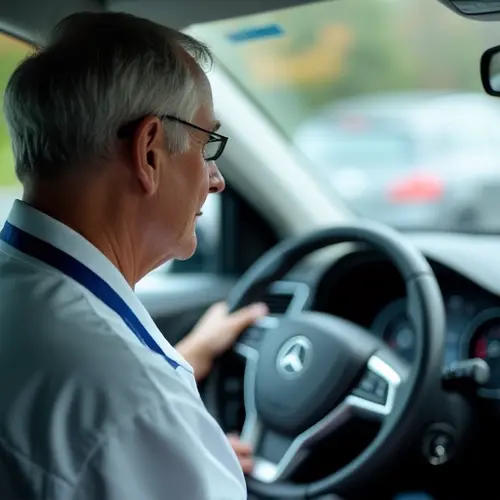EU adopts major driving license reforms including digital licenses, cross-border penalties for serious offenses, stricter requirements for new drivers, and measures to address professional driver shortages as part of Vision Zero road safety strategy.

EU Takes Bold Action Against Road Fatalities
The European Union has adopted sweeping reforms to driving license regulations in a determined effort to reduce the nearly 20,000 annual road deaths across member states. The new rules, approved by EU lawmakers in October 2025, represent the most significant update to driving license standards in decades and form a crucial component of the bloc's Vision Zero strategy to eliminate road fatalities by 2050.
Cross-Border Enforcement and Digital Innovation
One of the most groundbreaking changes introduces EU-wide driving bans for serious traffic offenses such as drink-driving or extreme speeding. "Nearly 40 percent of drivers who have their licence revoked or suspended in a country other than the one where it was issued go unpunished," Italian EU lawmaker Matteo Ricci revealed during parliamentary discussions. This new system ensures that penalties follow drivers across borders, closing a significant enforcement gap.
The reforms also accelerate the transition to digital driving licenses, which will become accessible via mobile phones while maintaining the option for physical documents. German MEP Jutta Paulus emphasized the urgency of these changes: "The reform is necessary because the world has changed. We must come down from 20,000 deaths in traffic per year and this reform is part of the package."
Stricter Requirements for New Drivers
Young drivers will face a mandatory two-year probationary period with stricter penalties for violations. The reforms also expand accompanied driving across the EU, allowing 17-year-olds to drive under supervision until age 18. Driving tests will now place greater emphasis on modern challenges including distraction caused by mobile phone use, blind spot awareness, and interaction with vulnerable road users like pedestrians and cyclists.
German MEP Markus Ferber clarified important limitations: "Cross-border licence disqualifications will not apply to vacationers who receive a minor fine due to ignorance of local regulations." This ensures that the new enforcement measures target serious offenders rather than tourists making minor mistakes.
Addressing Professional Driver Shortages
In a move to combat workforce shortages in the transport sector, the minimum age for truck drivers will be lowered from 21 to 18, while bus drivers can qualify from age 21 instead of 24. These changes come with enhanced training requirements to ensure safety standards are maintained.
The legislation establishes a maximum validity period of 15 years for car and motorcycle licenses, which can be reduced to 10 years in countries where driving licenses serve as identity documents. Polish MEP Elżbieta Łukacijewska highlighted the flexibility built into the reforms: "It is up to each Member State to decide whether older drivers should undergo additional tests. We have ensured that member states retain full flexibility in assessing their fitness to drive."
National Implementation and Digital Readiness
Member states have three years to incorporate the new rules into national legislation, with an additional year for practical implementation. Countries are already preparing for the digital transition, though readiness varies significantly. Germany's Technical Inspection Association (TÜV) has warned that "there is still a lot of work to be done" to digitize driving licenses due to different software systems used by state authorities.
In contrast, Bulgaria's Deputy Prime Minister Grozdan Karadjov stated that his country is ready to introduce digital driver's licenses, with the Ministry of e-Government already developing the necessary systems.
The Road Safety Challenge Across Europe
The reforms come as EU road deaths reached 19,940 in 2024, representing a 2% decrease from 2023 but still far from the EU's target of halving fatalities by 2030 compared to 2019 levels. Significant disparities persist between member states, with Sweden recording the safest roads (20 deaths per million inhabitants) while Romania (78/million) and Bulgaria (74/million) report the highest fatality rates.
Poland has shown remarkable progress, achieving a 35% reduction in road deaths since 2019 - the largest improvement among all EU countries. As these new driving license rules take effect over the coming years, they represent a critical step toward making European roads safer for all users.

 Nederlands
Nederlands
 English
English
 Deutsch
Deutsch
 Français
Français
 Español
Español
 Português
Português









